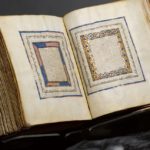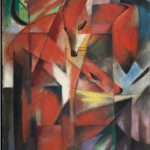
MADRID.- The Prado will be presenting in Australia a portrait of the Museum through the great masters in its collections. The Museo del Prado has entered into a collaborative agreement with Art Exhibitions Australia (AEA), a non-profit-making body responsible for the organisation of major exhibitions in Australian museums, and with the Queensland Art Gallery in Brisbane. As a result of this agreement, signed in the presence of Ángeles González Sinde, the Spanish Minister of Culture, the Prado will next year present the exhibition Portrait of Spain. Masterpieces from the Prado at the Queensland Art Gallery. The Prado will thus be continuing with its programme of international exhibitions, for which it receives the special support of ACCIONA, a Benefactor Member of the Museum.
With this new exhibition, the Museum will present for the first time in Australia a survey of the history of Spain and Spanish art from the 16th century to the early 20th century through a group of works comprising 80 paintings and around 20 works on paper.
 Within the Museum’s “International Prado” exhibition programme, this new event will allow the Prado to present itself to Australian society as special ambassador for Spain thanks to the initiative of the AEA, which has also been the guiding force behind important exhibitions held in other European institutions such as the Tate Gallery, London, the Musée du Louvre, the Musée Picasso and the Musée d’Orsay, Paris, and the Rijksmuseum, Amsterdam in addition to important US institutions such as the Metropolitan Museum of Art and the MoMA, both in New York.
Within the Museum’s “International Prado” exhibition programme, this new event will allow the Prado to present itself to Australian society as special ambassador for Spain thanks to the initiative of the AEA, which has also been the guiding force behind important exhibitions held in other European institutions such as the Tate Gallery, London, the Musée du Louvre, the Musée Picasso and the Musée d’Orsay, Paris, and the Rijksmuseum, Amsterdam in addition to important US institutions such as the Metropolitan Museum of Art and the MoMA, both in New York.
Portrait of Spain. Masterpieces from the Prado will present around 100 works with the aim of encouraging a reflection on the evolution of painting in Spain over the course of more than three centuries and on the internal and external factors that influenced it.
To explain this development, the exhibition will be presented in chronological order, focusing on three major periods with clearly defined political, social and artistic characteristics: an initial section covering the years 1550 to 1770, which coincides in political terms with the Ancien Régime and in cultural terms with the so-called Spanish Golden Age. This will be followed by a section spanning the last quarter of the 18th century and the first half of the 19th century, which was a “critical” period with important shifts in mindsets, political organisation and forms of social relations. Finally, there will be a section on the last fifty years of the 19th century, the period that saw the birth of modern Spain.
Within each period the exhibition features works by the leading artists of the day as well as examples of the most characteristic themes and subjects that distinguish each period from the others. As a result, the visitor will not only learn about the stylistic evolution of Spanish painting but also how thematic interests changed over time and how new subjects were introduced.
The works in the first section are grouped under the headings “Portrait and Power: monarchs and buffoons”, “Mythology as the Language of Power”, “Painting and Religion” and “Secular Society: the still life”. While most of these themes continued to be present in later centuries they are represented here in the section that corresponds to the period of their greatest influence over the formulation of art in Spain. In the case of the second section (“1770-1850: A changing world”) the headings are “Images of a Society”, “Portrait and daily Life” and “Reason and Madness”, the last comprising graphic work by Goya that covers aspects of art and thought in Spain at that time that cannot be represented through paintings. The last section (“1850-1900: On the threshold of modern Spain”) will reveal how the country itself, its history, landscape and literature were the subject of artistic reflection by painters, many of whose works express the links that they felt with Spanish artists of the past. This section includes the headings “Defining the traditional Image of Spain” and “Spanish Painting looks at itself in the Mirror”.
Among the artists represented in the exhibition are El Greco, Ribera, Zurbarán, Velázquez, Murillo, Valdés Leal, Carreño, Paret, Van der Hamen, Meléndez, Goya, Vicente López, Federico de Madrazo, Rosales, Fortuny, Beruete and Sorolla. There will also be paintings by foreign artists working in Spain or directly influenced by Spanish painting, such as Titian, Anthonis Mor, Rubens, Luca Giordano, Houasse, Tiepolo and Mengs.








